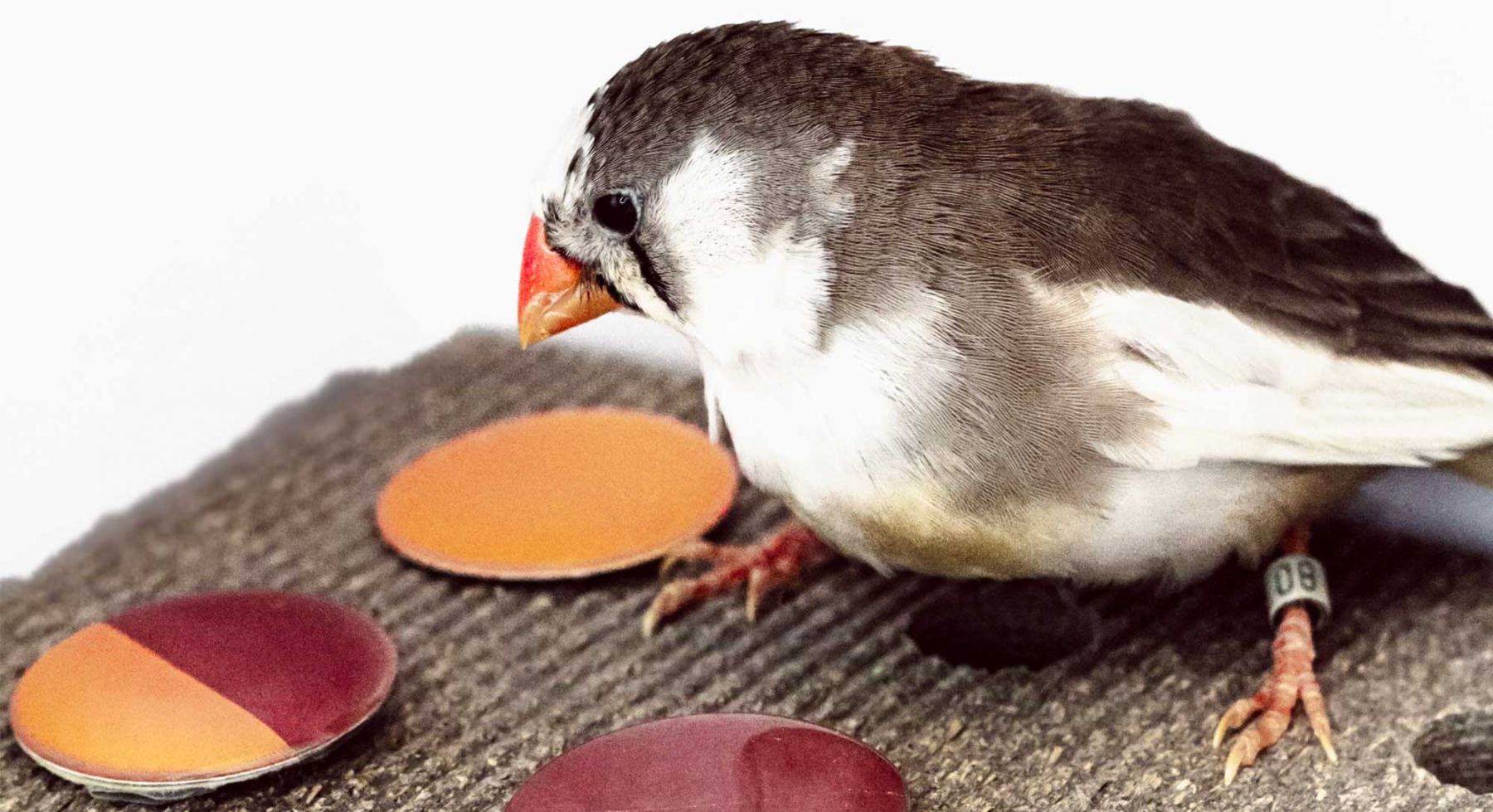Perception—such as visual physiology and cognition—determines what information animals can gather. To understand assessment, then, we need to understand perception. I have used techniques from the behavioral and cognitive sciences to test perceptual capabilities and how they relate to assessment in contexts from mate choice to contests.
Most of my work in this field has focused on categorical perception. Categorical perception occurs when a continuous stimulus is perceived as lying in distinct categories—for example, humans categorically perceive continuous variation when we break the color spectrum into a rainbow. Through collaborative work, I’ve studied how categorical perception affects the perception of visual signals.
Discoveries
- Female zebra finches show categorical perception of male orange to red beak color, an important mate choice signal. This was the first discovery of categorical perception of signal coloration (Caves, Green et al., Nature, 2018).
- Male zebra finches also show categorical perception of male beak color. Beak color is an assessment signal used in male-male contests, but variation in color perception is not related to contest behavior (Green et al., Ethology, 2021).
- Altering models of signal evolution to include categorical perception breaks down classic “reliable signaling” relationships; these relationships can be rescued by introducing variation among individuals in categorical perception abilities (Peniston et al., Evolution, 2020).
- More broadly, categorical perception is widespread among taxa and sensory modalities: from invertebrates to vertebrates, hearing to vision. The evolution of categorical perception across the diversity of animals may have shared selective forces (Green et al., Behavioral Ecology, 2020).
Future Questions
- How does the perception of resource variation (such as the size of the contested burrow in mantis shrimp) or of relative ability (such as group membership in banded mongooses) affect assessment and decision-making?
- How are sensation, perception, and assessment linked to physical mechanisms? For example, how do mantis shrimp sense high-force strikes on their armored tailplates, and does this influence contest behavior?
